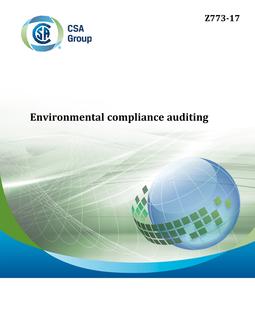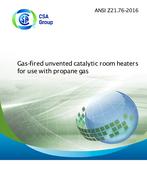-
-
Available Formats
- Availability
- Priced From ( in USD )
-
Available Formats
-
- Secure PDF 🔒
- Immediate download
- $150.00
- Add to Cart
-
- Printed Edition
- Ships in 1-2 business days
- $150.00
- Add to Cart
Customers Who Bought This Also Bought
-

CSA Z773-17 (R2022)
Priced From $133.00 -

CSA M688-10 (R2015)
Priced From $58.00 -

CSA Z76.1:21
Priced From $110.00 -

CSA ANSI Z21.76-2016 (R2021)
Priced From $624.00
About This Item
Full Description
Preface
This is the second edition of CSA Z767, Process safety management . It supersedes the previous edition published in 2017. The following are the major changes to this edition: a) an expansion and renaming of Clause 5.4 to "Conduct of operations and operational discipline", with more explicit definition of the requirements; b) Clause 6.3 has been retitled "Risk management framework" and provides an explicit step-by-step definition of the requirements for a risk assessment including its revalidation; c) Clause 6.4, "Human factors", has been significantly rewritten to be both more explicit and current in its approach; and d) the Standard now explicitly allows the use of engineering assessments (see Clause 7.3.8). This version of the Standard continues to be Canadian-centric and incorporates learnings from pre-existing standards, guidance, and experience in PSM internationally. It is applicable to facility operators across all industries who might have dangerous energy or materials in their operations, who are in contact with other PSM models that are centred around the traditional process industry, or who have threshold quantities for applicability. It continues to empower those with pre-existing safety management systems (SMSs) to leverage their SMS to deliver on process safety performance. It continues to provide flexibility such that small-, medium-, and large-size operators all have a reasonable chance of success at leveraging PSM to improve their safety performance. CSA Group acknowledges that the development of this Standard was made possible, in part, by the financial support of the BC Energy Regulator, Chemistry Industry Association of Canada (CIAC), Canadian Natural Resources Ltd., Cenovus Energy, the Canadian Society for Chemical Engineering (CSChE), Enbridge Gas Distribution, Environment and Climate Change Canada, Hatch, J.-P. Lacoursière Inc., Nexen Energy, NOVA Chemicals, Suncor Energy, and the Technical Standards and Safety Authority (TSSA). The evolution and growth of process safety knowledge within Canada is a key target area of the Canadian Society for Chemical Engineering (CSChE) PSM Division. CSA Group would like to thank the CSChE for the use of its Process Safety Management Standard (2012) as a seed document in the development of this Standard. This Standard was prepared by the Technical Committee on Standards for Process Safety Management, under the jurisdiction of the Strategic Steering Committee on Business Management and Sustainability, and has been formally approved by the Technical Committee. This Standard has been developed in compliance with Standards Council of Canada requirements for National Standards of Canada. It has been published as a National Standard of Canada by CSA Group.
Scope
1.1 Facilities and worksites affected
This Standard identifies the requirements for a PSM system for facilities and worksites handling or storing materials that are potentially hazardous either due to an inherent chemical, biological, toxicological, or physical property of those materials, or due to the material’s potential or kinetic energy.
1.2 Minimum lifecycle requirements
This Standard applies throughout the lifecycle of a facility or worksite including a) conceptual design; b) facility siting; c) preliminary and process design; d) detailed engineering design; e) construction; f) commissioning and start-up; g) operations and maintenance; h) revamps and modifications; i) decommissioning; and j) site closure.
1.3 Policies, practices, and procedures
This Standard identifies the various policies, practices, and procedures that may be used to implement a PSM system. Note: It is not the intent of this Standard to define prescriptive solutions that will meet the needs of every organization. Each facility or worksite within an organization is unique, and users of this Standard will find that a particular policy, practice, or procedure that is effective at one site might need to be modified or rewritten for it to be effective at another site. An organization may include these minimum requirements in an integrated management system or in a stand-alone PSM system in preventing incidents at facilities that manufacture, store, handle, or otherwise use potentially hazardous materials. An organization may also use this Standard as an audit tool for its PSM system.
1.4 Terminology
In this Standard, "shall" is used to express a requirement, i.e., a provision that the user is obliged to satisfy in order to comply with the Standard; "should" is used to express a recommendation or that which is advised but not required; and "may" is used to express an option or that which is permissible within the limits of the Standard. Notes accompanying clauses do not include requirements or alternative requirements; the purpose of a note accompanying a clause is to separate from the text explanatory or informative material. Notes to tables and figures are considered part of the table or figure and may be written as requirements. Annexes are designated normative (mandatory) or informative (non-mandatory) to define their application.





